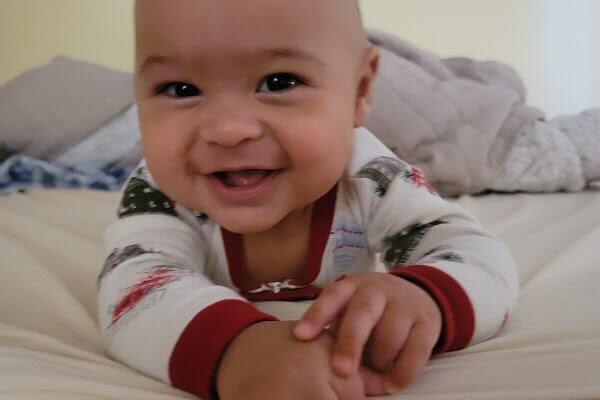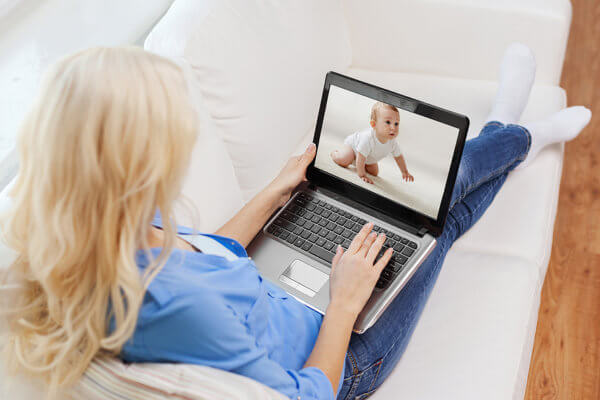By Jenna McCarthy
Like many women, I spent a large chunk of my pregnancy gearing up for my baby’s homecoming. I lovingly washed her adorable future wardrobe in baby-safe detergent and decorated her nursery in a palette of gender-appropriate hues. I collected an army of impossibly small, soft things—blankets, hats, stuffed animals— which soon littered every available inch of horizontal space in her room. I assembled pump parts, boiled dozens of bottles and sanitized remote areas of my home that my baby would surely never encounter.
I was as ready as I thought I could get—until I got my pint-size daughter home and realized the tremendous scope of my new responsibilities. The list of daunting tasks I faced included, but was not limited to, clipping her microscopic fingernails, bathing her slippery body and tending to that unsightly umbilical stump. Yet, the baby-care basics soon became routine, and they will for you, too. In the meantime, here are some crib notes (so to speak) to help you navigate a handful of those worrisome “firsts.”
Tending to the umbilical cord
There’s no argument that the umbilical cord stump is not a pretty sight. As much as you want it to be gone, resist the urge to facilitate its departure. “For a long time, pediatricians recommended cleaning the umbilical stump with alcohol,” says Alan Greene, M.D., clinical professor of pediatrics at Stanford University and author of Raising Baby Green (Jossey- Bass, September 2007). “But recent studies have shown there’s no benefit to this—in fact, the stump comes off faster and cleaner without it.”
What’s more, Greene explains, alcohol can destroy some of the healthy surrounding cells. A little oozing or bleeding is normal and not cause for alarm. “It’s not common for this area to get infected,” reassures Ann Douglas, author of The Mother of All Baby Books (Wiley; 2002). “It’s a self-healing sort of thing; it always had to be.” A trip to the pediatrician is in order only if the skin around the stump begins to look hard or red, or if any contact with the area appears to cause pain.
Until the stump falls off naturally (usually within two to three weeks), hold off on giving baby a “real” bath, and use only warm water (no soap) for wipe-downs. Folding diapers down and away from the stump can help minimize irritation.
Greene suggests using the cord falling off as an occasion to get serious about all-important tummy time. “A half an hour a day is wonderful for development and for establishing a lifelong habit of exercise,” he adds.
NEXT: The First Bath
{pagebreak}
Administering the first bath
Once the umbilical cord is a memory (and if you had a boy and he was circumcised, that’s all healed up), you have the green light to run the inaugural bath. “The easiest place and position for bathing a newborn is in an insert in the kitchen sink,” says Douglas. (Bending over the tub can be a real pain in the… back.)
These inserts are shaped like mini reclining chairs and usually have a spongy, nonslip liner that helps keep baby from sliding around. (Wearing cotton gloves can help you get a solid grip on a super-slippery baby, and as a bonus, they act like built-in washcloths.) Many parents like to incorporate a nice, warm bath into the bedtime routine.
This is fine, say the pros, but choose a safe, mild cleanser and only use it every two to three days. “Until she’s outside getting really dirty or eating solid foods and putting spaghetti in her hair, warm water and a washcloth will do the job most of the time,” says Douglas.
NEXT: Caring for the circumcision site
{pagebreak}
Caring for the circumcision site
The circumcision decision is a major one for many parents—it’s also purely personal. “The medical evidence on the pro and consides essentially balances out,” Greene says. If you opted to remove the foreskin, the most critical aspect of post-op care is to apply a protective lubricant (such as A+D Ointment) each time you change a diaper. This will promote healing and prevent anything from adhering to the area as it heals.
As with the umbilical cord, a small amount of bleeding is normal and is not a reason to panic. Also be aware that your infant may not feel like eating much in the day or two following the procedure. You can expect full healing within seven to 10 days. Make sure he never goes more than eight hours without producing a wet diaper, and call your pediatrician if he develops a fever, swelling or you notice a foul odor.
NEXT: Dealing with diapering
Dealing with diapering
Many new parents apply a protective moisture barrier with each diaper change, believing it can’t hurt and might help. “There’s a new interest in the safety of the things we’re putting on a baby’s skin,” says Greene. (Skin is, after all, the body’s largest organ.) Fortunately, many companies that manufacture baby (and adult) skin products are now formulating them without the potentially dangerous preservatives and parabens often used in the past. Greene recommends that parents check safecosmetics.org or cosmetics database.com for lists of safe suppliers. The best defense against a diaper rash is a good offense: Change diapers often so the ammonia in baby’s urine won’t have time to irritate her skin. If irritation develops despite your efforts, a rich zinc paste will soothe it and speed healing.
NEXT: Clipping tiny fingernails
{pagebreak}
Clipping tiny fingernails
Cutting nails has to be among the most frightening of infant-care tasks. Many parents will only attempt to clip baby’s fi ngernails when he is asleep, while some moms have confessed to nibbling baby’s nails off with their own teeth. One dad I know refuses to do it at all. I found that I could accomplish the task (relatively) easily while my daughter was nursing; even the one time I accidentally drew blood, she barely removed her lips from her milk source long enough to yelp. Douglas insists that a well-lit area is critical; Green suggests placing baby on your lap facing away from you, so that the clipping motion mimics the one you perform when you snip your own nails. “It helps to have two people,” Douglas adds. “Your partner can hold the baby’s hand fl at, so it’s not clenched into a ball.”
NEXT: Managing cradle cap
{pagebreak}
Managing cradle cap
Babies and adults alike make new skin cells as quickly as they shed old ones. In very young babies, however, scalp skin is growing so fast it can get ahead of itself—resulting in the unattractive (but harmless) build-up of scaly fl akes known as “cradle cap.” Cradle cap isn’t dangerous, it’s not a sign of an infection and no treatment is required. If its appearance bothers you—or you have baby’s fi rst photo shoot pending—Greene recommends gently rubbing some olive oil into the scalp and letting it sit there for 15 to 20 minutes. “The oil will dissolve the bonds,” he explains, “then you can use a very soft toothbrush or washcloth to rub off the flakes.”
Is my baby normal?
“A lot of babies between 3 and 6 weeks old develop physical symptoms that almost mimic a mini puberty,” explains Greene. “It’s common to see breast buds, vaginal discharge, swollen genitals and full-blown acne for a few weeks.” While these visuals can be disconcerting, they’ll go away on their own as hormone levels stabilize, so there’s no need for treatment.
Use this handy guide for head-to-toe baby basics.




